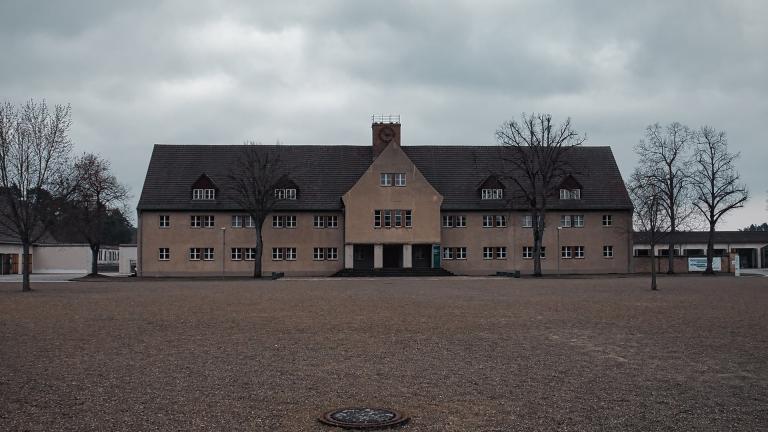
Read more about WW2

Ravensbrück might not be as well-known as Auschwitz or Dachau. But it was the Nazis’ main concentration camp built specifically for women. Barbed wire, watchtowers, long roll-call squares and physical abuse turned it into the backdrop for what we here at Sky HISTORY consider one of the bleakest chapters of the war.
The camp opened in May 1939, just months before the outbreak of war. The Nazis wanted a central site to hold women they branded asocial or politically dangerous. Read: communists, social democrats, Jehovah’s Witnesses, Jews, Roma and Sinti and sex workers. Later in the war, it became a prison for female resistance fighters from across occupied Europe.
The compound was run by the SS and staffed with female guards, hundreds of whom trained there before being sent to other camps. Conditions were brutal. Prisoners endured pre-dawn roll calls, hours of standing in freezing weather, lice-infested barracks, constant hunger and beatings.
Like other camps, Ravensbrück doubled as a factory. Siemens ran workshops just outside the perimeter where women produced electrical components for the war effort. Inside the camp, they sewed uniforms, repaired equipment and worked in punishment details.
Between 1942 and 1943, a group of young Polish women (later known as the 'Rabbits') were forced into surgical experiments. Doctors cut into legs, infected wounds and tested new drugs. Several women were executed to cover up the crimes. Others survived to give testimony after the war. Their scars later became living evidence at the Nuremberg trials.
Despite everything, women inside Ravensbrück built networks of support and continued to fight for what they believed in.
Ravensbrück didn’t start with gas chambers. But by 1944, as deportations from across Europe swelled, the SS built one beside the crematorium. Tens of thousands died by starvation, disease, shootings and gassing in the camp’s final year.
Next door, the Nazis built Uckermark. It was labelled a 'youth protection camp' but in reality, it was a site of extreme neglect and punishment for girls and young women. Inside Ravensbrück, children suffered the same hunger and cold as adults. Newborns rarely survived.
As the Red Army advanced in April 1945, the SS forced thousands on death marches toward the northwest. Many collapsed on the roadside. Around 3,000 prisoners too weak to move were left behind.
Soviet troops liberated the camp on 30th April 1945, just a few months after the liberation of Auschwitz. Survivors emerged starving, ill and searching for families who, in many cases, no longer existed.
Today the site is a memorial where women are celebrated and remembered, not silenced and persecuted. In 1954, German sculptor Will Lammert was commissioned to design a poignant memorial on the site of the former concentration camp. There’s also a small memorial museum. Every year on Holocaust Memorial Day the site is strewn with flowers.
Want more on untold wartime histories? Subscribe to the Sky HISTORY newsletter for new features, videos and series updates delivered straight to your inbox.